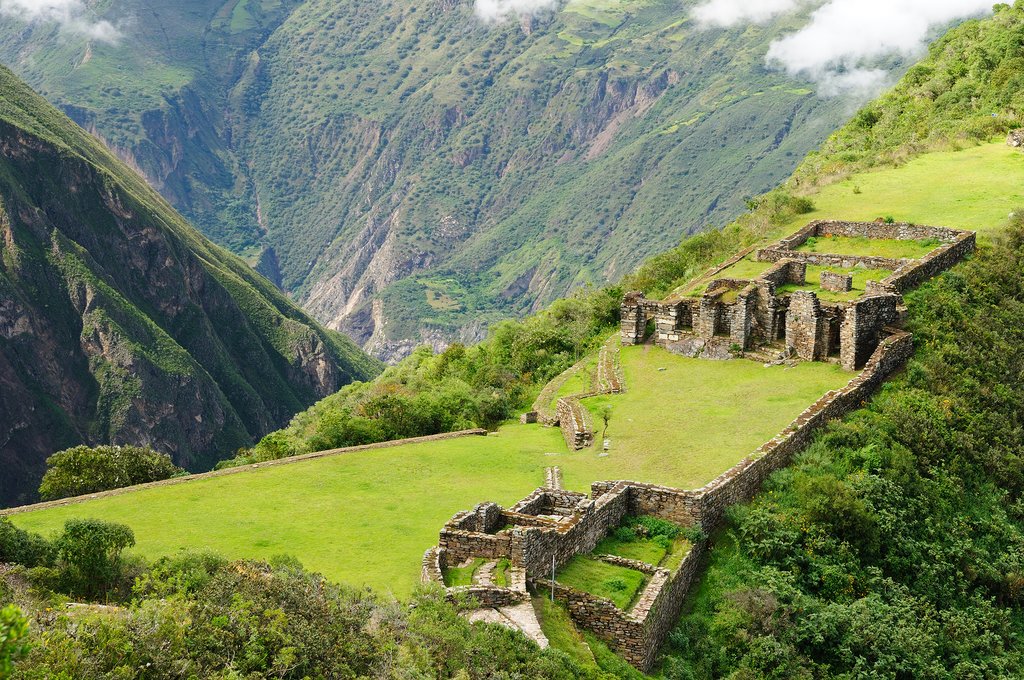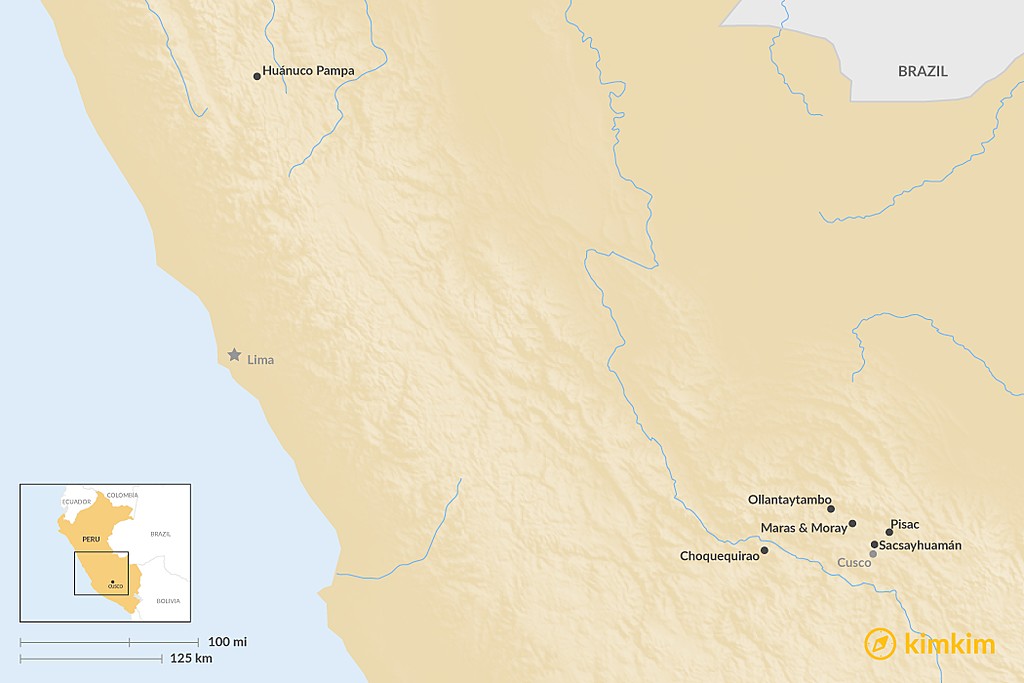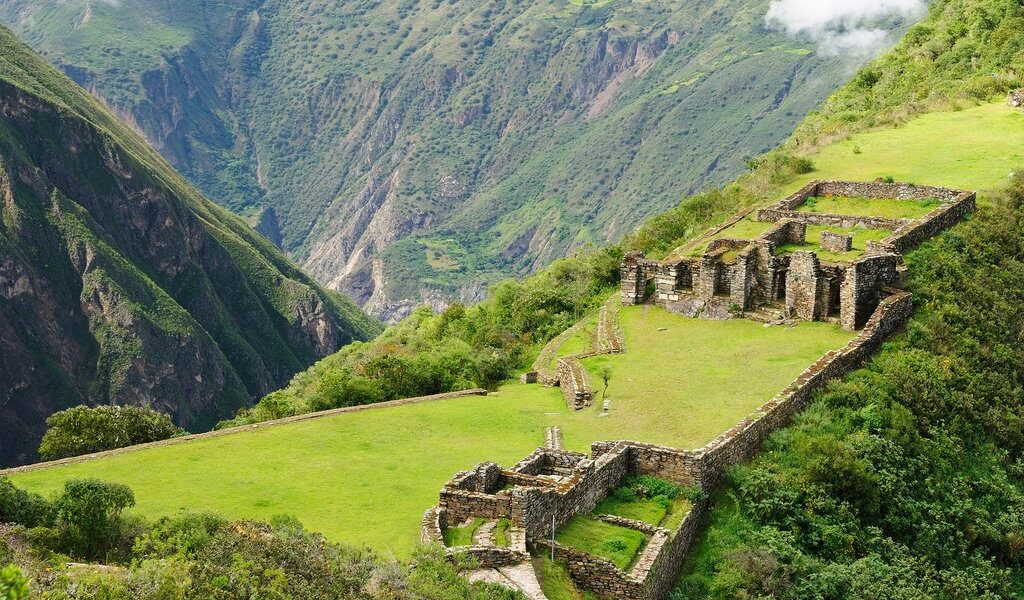
Machu Picchu draws well in excess of one million visitors annually, but hundreds of less-frequented Incan ruins lie scattered in the jungle and mountains around Cusco. Most are surrounded by equally spectacular scenery, and many are reachable via epic hikes. Here’s a list of the most impressive Incan ruins to visit while evading the tourist crowds.
## Exploring the Magnificent Incan Ruins Beyond Machu Picchu
Peru, a land of ancient wonders and breathtaking landscapes, is renowned for its rich Incan heritage. While Machu Picchu rightfully claims its place as a global icon, the country is also home to a wealth of other captivating Incan ruins, each with its unique story and allure. These sites, often less crowded and more accessible, offer a deeper and more intimate glimpse into the fascinating world of the Inca civilization. This exploration will guide you through some of the most remarkable Incan ruins outside of Machu Picchu, offering insights into their history, accessibility, and what makes them truly special.
**Planning Your Exploration**
Several of these incredible locations, including **Sacsayhuamán**, **Ollantaytambo**, and **Pisac**, are conveniently accessible on day trips from **Cusco**. These excursions often involve comfortable bus rides combined with invigorating short hikes, allowing you to fully immerse yourself in the surrounding scenery. Alternatively, the captivating ruins of **Maras** and **Moray** can be explored on organized day tours departing from either **Urubamba** or Cusco. For the more independent traveler, a long day trip from Cusco via taxi is also a viable option, though it’s important to plan accordingly. For the more adventurous, **Choquequirao** and **Huánuco Pampa** necessitate longer, more challenging hikes. Choquequirao can be reached from the town of **Cachora**, a four-hour bus journey from Cusco along the road to Abancay, while Huánuco Pampa requires a trek from **La Unión** in the Central Andes.
**Essential Preparations for Your Journey**
Regardless of which ruins you choose to explore, it’s essential to be well-prepared for your adventure. Always carry an adequate supply of drinking water to stay hydrated, especially during hikes. Pack warm clothing, as the Andean weather can be unpredictable, and wear sturdy footwear to navigate the uneven terrain. It’s also wise to leave valuables behind whenever possible, especially when visiting more remote locations. Exercise caution when exploring these less-traveled sites, and always be mindful of your surroundings. With the exception of the Huánuco ruins, guided tours can be arranged from the nearest town or city for each of these locations.
When visiting any of these historical sites, it is of utmost importance to show respect for both the local communities and the ruins themselves. Avoid taking photographs of locals without their express permission, and refrain from climbing on any ancient structures that are designated as protected sites. By practicing responsible tourism, we can help preserve these invaluable cultural treasures for future generations.
### Unveiling the Majesty of Sacsayhuamán
Sacsayhuamán is particularly captivating during the Incan festival of the sun, known as **Inti Raymi**. This vibrant celebration, which takes place on the summer solstice, transforms the ruins into a spectacle of color and tradition. Conveniently located near Cusco, Sacsayhuamán is easily accessible for a day trip. The site provides an excellent example of the Inca’s strategic practice of adopting and adapting the strongholds of previous civilizations. While the Inca utilized Sacsayhuamán, its origins trace back to the **Killke** people, who inhabited the area around 1000 BCE. The site’s striking zigzagging fortifications are a testament to the architectural prowess of these ancient cultures and offer a stimulating hike from the center of Cusco.
**Reaching Sacsayhuamán:** You can reach Sacsayhuamán either by embarking on a scenic hike from Cusco or by joining a tour from Cusco, which often includes visits to the nearby Incan ruins of **Q’engo** and **Pukapukara**, thus completing a comprehensive circuit of historical exploration.
### The Dual Delights of Ollantaytambo
Ollantaytambo, a key town within the Sacred Valley, is renowned for its impressive Incan ruins, which gracefully frame the town on either side. The principal site, situated above **Plaza Araccama**, is a complex of steep terraces that once served as the stronghold of Manco Inca. Here, Manco Inca achieved a rare victory against the Spanish conquistadors in 1536, a triumph that provided a momentary respite before the Spanish returned with a larger force, compelling Manco Inca to retreat further into the jungle. Beyond its military significance, the site also functioned as an Incan temple. Further exploration on the opposite side of town reveals additional Incan ruins at **Pinkulluna**, enhancing the historical richness of Ollantaytambo.
**Getting to Ollantaytambo:** Travel by bus from Cusco to Urubamba, followed by another bus to Ollantaytambo. Once in town, both ruin sites are easily accessible on foot.
### The Allure of Pisac
Pisac is a vibrant and engaging town located just an hour’s bus ride from Cusco. Towering above the town on a rugged green mountainside are the magnificent Pisac Incan ruins. Visitors can reach the ruins via a 2.5-mile hike from Pisac town or by taking a taxi. The journey rewards you with breathtaking tiers of Incan terracing that ascend to a ceremonial center. Once at the top, the panoramic views are truly unforgettable. The site also features Incan baths, sophisticated irrigation channels, and various other elements that provide valuable insights into the ingenuity and cultural practices of the Inca civilization.
**Accessing Pisac:** A bus ride from Cusco will bring you to Pisac, from where you can hike or take a taxi to the Pisac ruins.
### The Hidden Gems of Maras & Moray
Despite their location within the **Sacred Valley**, Maras and Moray have remained relatively untouched by mass tourism, offering a more secluded and authentic experience. Maras is a quaint town situated approximately 2.5 miles off the main road connecting Cusco and Urubamba. The ruins found here are notably different from those found elsewhere in the region, adding to their unique charm. About half a mile north of Maras lies an extraordinary series of salt pans, used since Incan times and originating from even earlier cultures. These salt pans cascade through the valley in stunning terraces, creating a visually striking landscape.
Moray is located 5.5 miles beyond Maras and is distinguished by its unique circular terraces, a design feature not found at any other Incan ruin. These terraces are spread across three distinct areas, with the primary terrace resembling a vast amphitheater. It is believed that the Inca used this site as an agricultural laboratory to experiment with the cultivation of various crops under different environmental conditions.
**Reaching Maras and Moray:** Take a bus from Cusco heading towards Urubamba and disembark at the Maras turn-off. From there, you can hike or take a taxi to Maras, and then proceed to Moray by another hike or taxi ride.
### The Majestic Isolation of Choquequirao
Choquequirao is growing in popularity among adventurous travelers, offering a more solitary experience. This remote and imposing ruin, set upon a lush ridge at an altitude of over 9,840 feet, requires a challenging 2-day hike from the town of **Cachora**, making it a deserving candidate for the title of “Machu Picchu without the tourist hordes.” The arduous but beautiful trek underscores the site’s historical significance as one of the final strongholds of Incan resistance against the Spanish. Largely unexcavated, Choquequirao features intriguing elements, such as a truncated hilltop believed to have been used for ceremonial purposes. The site evokes a sense of mystery and wonder that can sometimes be overshadowed by the crowds at Machu Picchu.
**Journey to Choquequirao:** Take a bus from Cusco towards Abancay, and get off at the Cachora turn-off. Then, take another bus to Cachora, followed by a demanding 4-day round-trip hike to Choquequirao.
### The Remote Splendor of Huánuco Pampa
Also known as **Huánuco Viejo**, these ruins represent one of the last Incan citadels to fall to the Spanish conquistadors, having been defended until 1543. The site extends across a wide expanse on a wild plain, accessible via a 2-hour hike above the town of **La Unión**, which itself is a 6-hour bus ride from **Huánuco** in the Central Andes. Occasionally, taxis offer transportation from La Unión to a point within a 20-minute hike of the site, but planning transportation with local guides is essential.
**Accessing Huánuco Pampa:** Travel by bus from Huánuco to La Unión, and then hike or take a taxi to Huánuco Pampa.

B-2105

